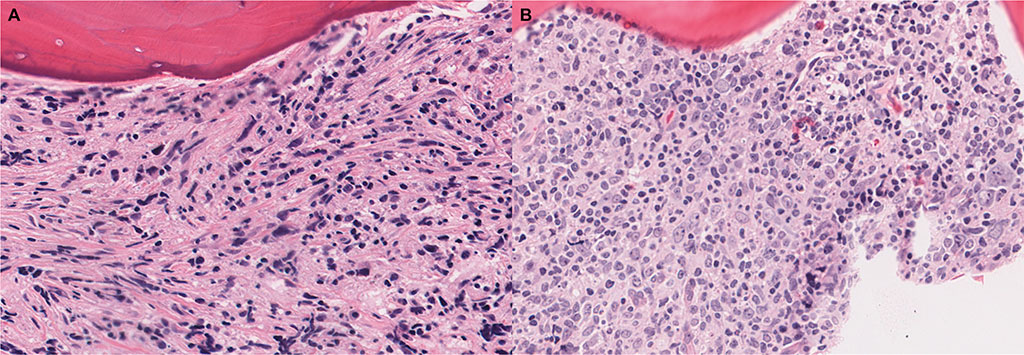Histological Criteria Predicts Lymphoma Transformation in Bone Marrow Biopsies
Posted on 16 Feb 2022
Large cell transformation (LCT) of indolent B-cell lymphomas, such as follicular lymphoma (FL) and chronic lymphocytic leukemia (CLL), signals a worse prognosis, at which point aggressive chemotherapy is initiated.
Although LCT is relatively straightforward to diagnose in lymph nodes, a marrow biopsy is often obtained first given its ease of procedure, low cost, and low morbidity. Criteria for morphologic evaluation of lymphoma transformation are not established in bone marrow biopsies.

Pathologists at the Yale Medicine (New Haven, CT, USA) and their colleagues studied the accuracy and reproducibility of a trained convolutional neural network in identifying LCT, in light of promising machine learning tools that may introduce greater objectivity to morphologic analysis. They retrospectively identified patients who had a diagnosis of FL or CLL who had undergone bone marrow biopsy for the clinical question of LCT.
They scored morphologic criteria and correlated results with clinical disease progression. In addition, whole slide scans were annotated into patches to train convolutional neural networks to discriminate between small and large tumor cells and to predict the patient's probability of transformation. All FL and CLL cases were scanned at ×40 magnification using a high-resolution Aperio scanner the Aperio ScanScope CS, (Aperio Technologies, Vista, CA, USA) and annotated with the digital pathology analysis software QuPath to define areas of maturing trilineage hematopoiesis, small cell lymphoma, and large cell lymphoma.
The investigators reported that using morphologic examination, the proportion of large lymphoma cells (≥10% in FL and ≥30% in CLL), chromatin pattern, distinct nucleoli, and proliferation index were significantly correlated with LCT in FL and CLL. Compared to pathologist-derived estimates, machine-generated quantification demonstrated better reproducibility and stronger correlation with final outcome data. Of the four models considered, the end-to-end convolutional neural network (CNN)-based model obtained the best results, with an AUROC of 0.857. This was followed by the logistic regression model trained on surface area estimates extracted from QuPath annotations (AUROC, 0.851).
The authors concluded that their histologic findings may serve as indications of LCT in bone marrow biopsies. The pathologist-augmented with machine system appeared to be the most predictive, arguing for greater efforts to validate and implement these tools to further enhance physician practice. The study was published in the February 2022 issue of the journal Archives of Pathology and Laboratory Medicine.
Related Links:
Yale Medicine
Aperio Technologies














